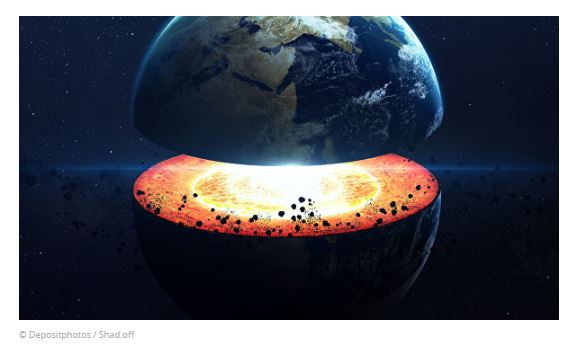December 9, 2018
One of the energy sources, which can replace the exhaustible resources of oil, natural gas, coal, uranium is right under our feet – the hot dry rock (HDR) is an abundant source of geothermal energy available for use. People learned how to mine it back in early 1960s, but further works on experimental petro-thermal stations are not moving.
Progress is hampered not only by the high cost of projects and technological difficulties, but also by negative public opinion.
The answer of disturbed subsoil
In 2005, at the Basel suburbs in Switzerland they began to drill a borehole for extracting the energy of hot granites. Technology required crushing the rocks at a depth of five kilometers.
To do this, fluid was pumped into the well under high pressure, which literally fractured the granites and made them permeable to water. This method is called a hydraulic fracturing; it is used in oil fields to "cheer up" a depleted well.
For the following six days during fluid pumping, the territory experienced earthquakes at magnitude of three and above points. Local population felt the shocks. Protests began, and eventually the multi-million dollar project was stopped.
A similar situation was developed in Germany - in Landau and Unterhaching, where geothermal power plants operate. In 2009, microearthquakes were felt. But, despite the protests of activists, the projects have not been closed, they are still functioning.
 The Enthusiasm was pumped into the ground
The Enthusiasm was pumped into the ground
Hot dry rock geothermal energy is one of the most promising areas, which, as scientists expect, will replace fossil fuel energy. Unlike hydrocarbons or coal, which must be not only mined, but also transported, and even processed, the heat of the Earth can be used directly. Due to radioactive decay in the core of the planet, the subsoil is heated to a high temperature. The miners face this phenomenon.
At three kilometers depth, temperature can reach up to 150, and at ten kilometers - up to three hundred degrees Celsius.
The subsoil heat is constant; it does not depend on the weather and other external conditions. Unlike hot springs, geysers or dry steam, which are rarely found and, as a rule, located in areas of active volcanism, far from consumers, hot rocks are everywhere in the planet.
Reaching them is not a problem, since deep drilling technologies are well developed in the world.
To get heat from the ground, it is needed to drill two wells. Water (heat transfer agent) is pumped into one of them and this water penetrates into fractures or pores of hot rocks at depth and gets heated. The hot fluid rises along the second well (operating well). This idea was proposed by Konstantin Tsiolkovsky back in early 20 century, and in his book “Heat shaft” ("Тепловая шахта") Soviet geologist Vladimir Obruchev gave detailed description of the method. HDR geothermal energy works even if the subsoil is not sufficiently hot, for instance, its temperature is about 80 degrees. In such a case, a binary cycle is used: heat from the well is pumped to easily boiling fluid - Freon or liquid hydrocarbons though a heat exchanger. The generated steam is pumped to the turbine, which generated electric power.
In his report, Academician Sergey Alexeenko from the Institute of Heat Physics named after S.S. Kutateladze of NR of RAS points out that this technology is sufficient to supply humanity energy for eternity.
Social opinion rules progress
The first thermal station was built in 1963 in France. In 1977, next to the Los-Amos Laboratory of the USA, it was the first time when the engineers used hydro-fracturing in construction of similar plant. Currently, 22 petro-thermal station are operating all over the world, most of which are in Europe. 14 of these generate electric power, while the rest operate for heating. Only one project – Soultz-sus-Forêts in France supplies electric power to the national grid.
The technology faces many complications. First of all, deep drilling is expensive. Most of the project budget is spent for drilling. Secondly, hydro-fracturing has ecological consequences: from soil disturbance and contamination of ground water to artificial man-caused earthquakes. Constant circulation of hot mineralised water in the well causes its fast clogging, equipment wear. In addition, crystallised rocks contain many mixtures, which are often toxic, easily dissolvable salts and all this is carried with the heat transfer fluid. The issue of its disposal, also risk of contamination of the environment then arises. Yet, petro-thermal energy is not intensively developed. Experts note that it has not yet passed the scientific stage of development. Each deep heat mining plant is unique and requires constant research. General public is against this technology, as well as again nuclear and wind energy, burial of carbon oxide gas in the shelf area. Nevertheless, the scientists do not give up hope and forecast increase of its share in total world energy generation by the end of 21 century.